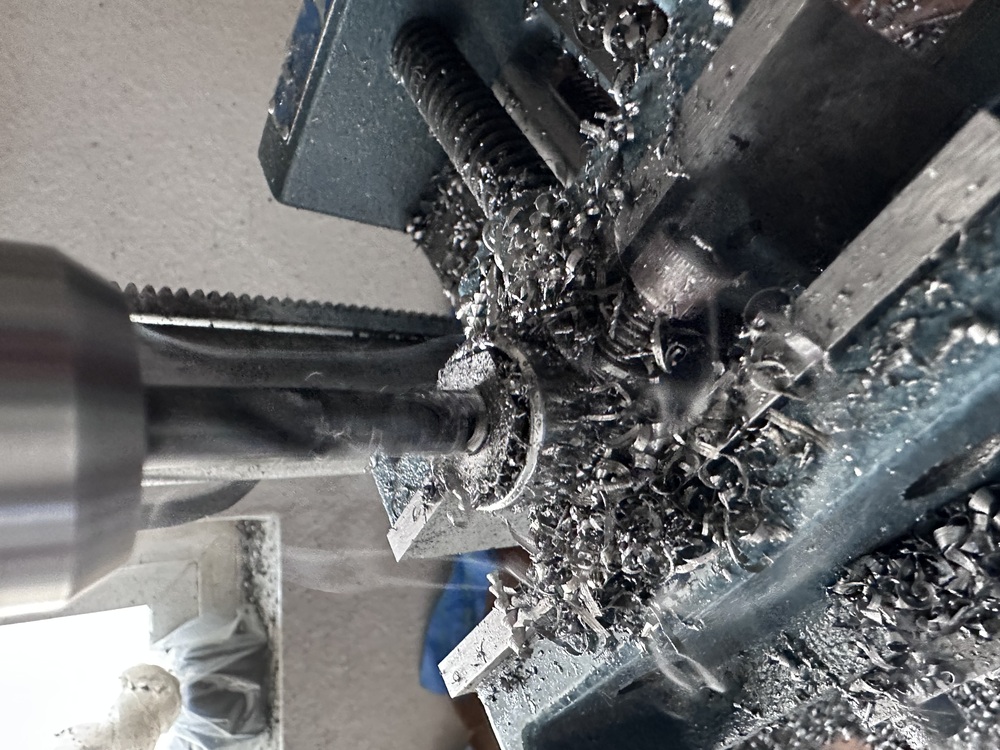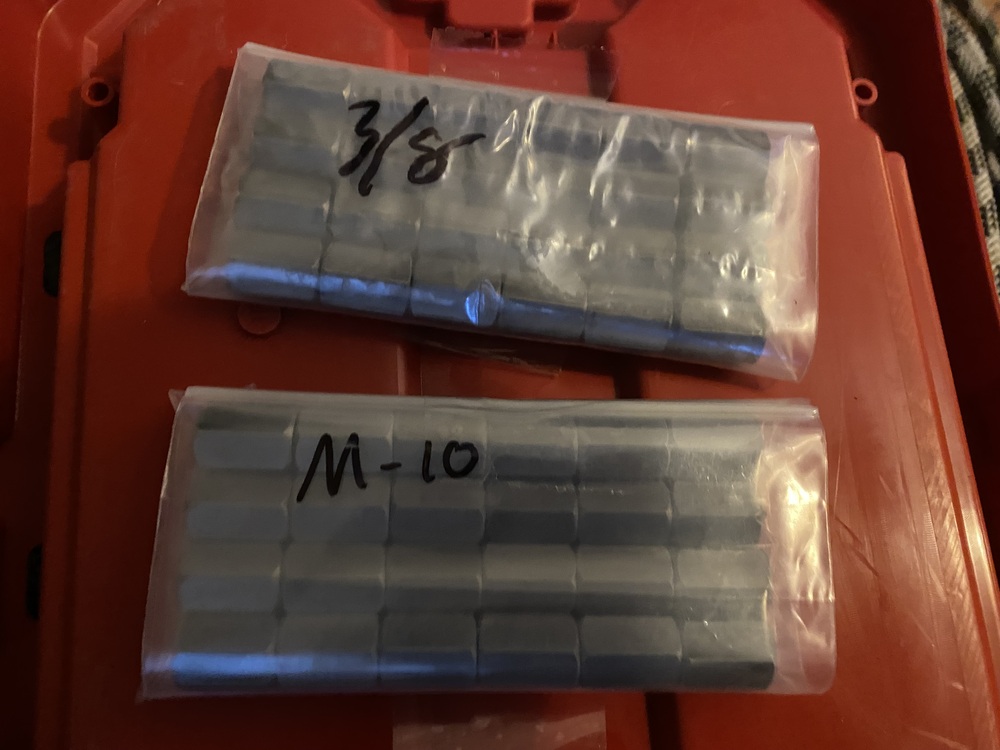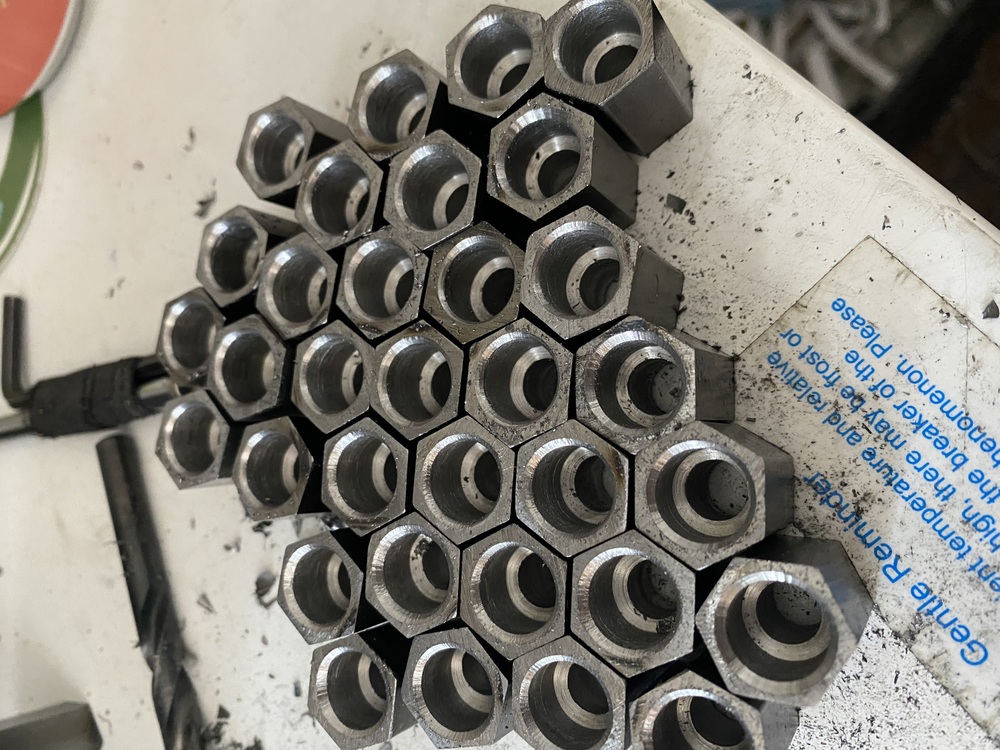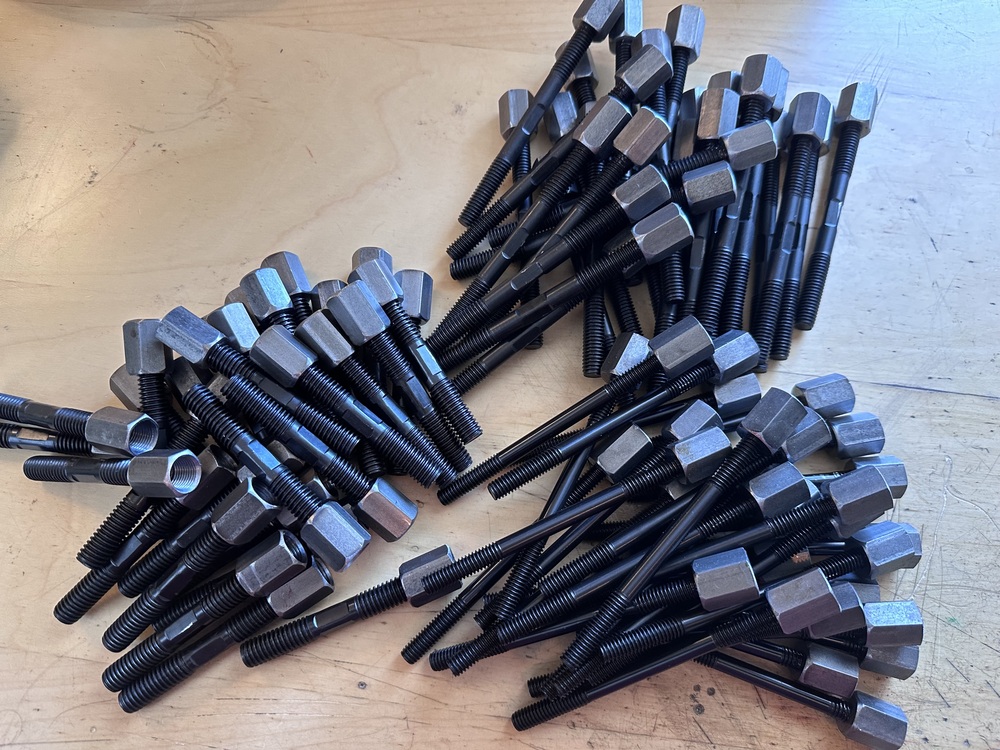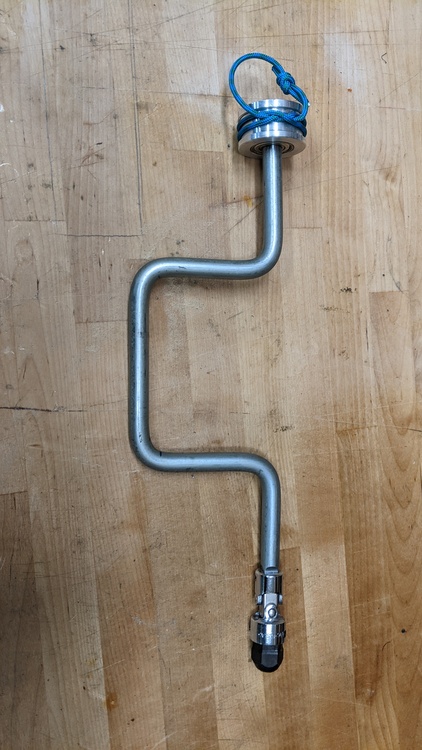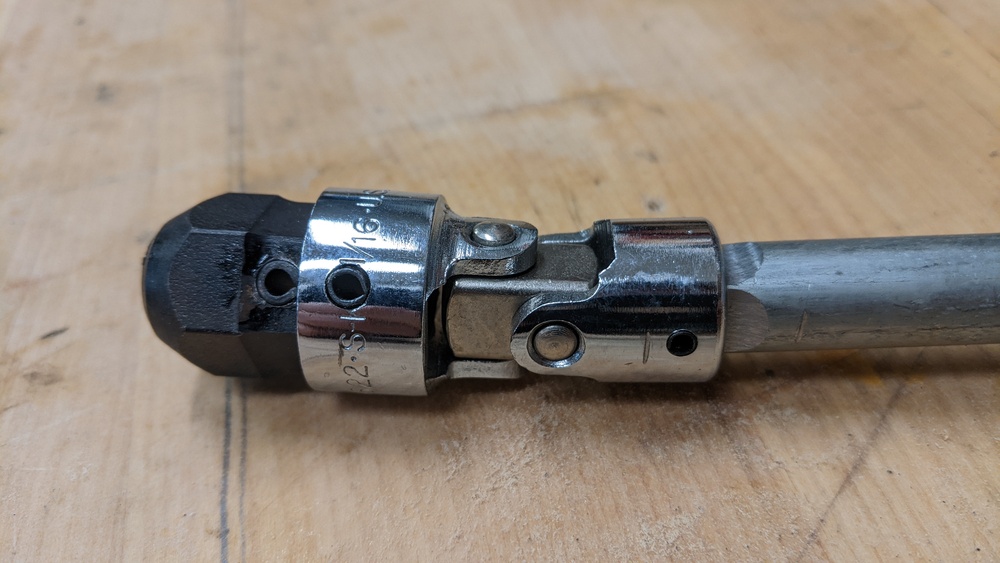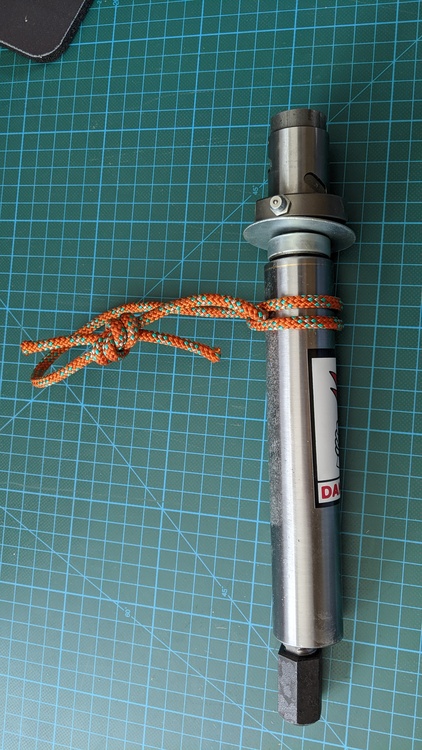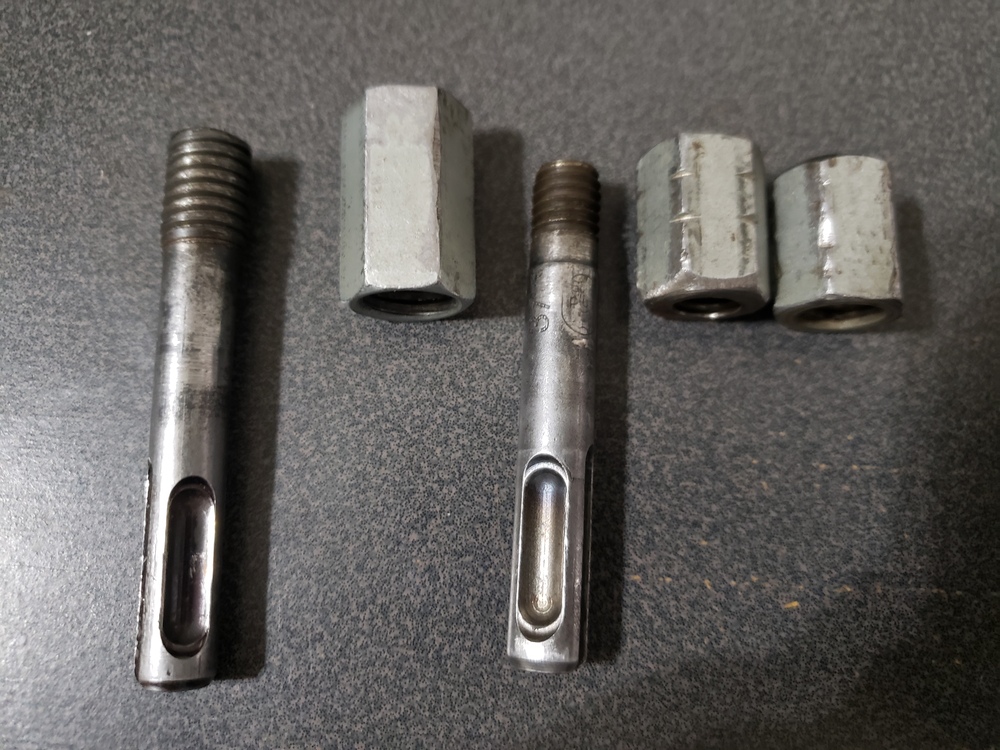Inexpensive bolt extractor
|
|
I have made both 3/8 and 1/2-13 to match my do dad. I did not re-harden them after threading but they have held up well. I prefer the 3/8 since the coupler is straight through easy peasy. I have fine tuned the length of the cut down coupler so I have slightly longer ones for bolts with the reduced diameter buisness end. If you are hand tapping, be sure to cut the bit as square as you can so the threads will be straight. Very nice write up Dan! |
|
|
Dan - you are a fine machinist, and more determined than I am. I tried the same a few years ago and annealed the bit poorly. There seemed to be a layer of softer metal around a hard core and when I attempted to cut threads they sheared off as I turned the die. I gave up. With my current order of operations, I prefer to have a coupling nut that fits both the spinner and the puller. Although yours is much simpler in that you have a standard 3/8-16 coupling nut, if you spin the bolt and want to start pulling it you have to use needle-nose pliers to hold it still while you screw on the end of the Doodad with it's own coupling nut. Leaving one step-down (1/2-20 to 3/8-16) coupling nut on the wedge bolt and using a crescent wrench to hold it still during the changeover is quicker for me and less frustrating. |
|
|
I have found that making custom couplers is the easiest option with the best results. It seems like about as much work as using the thread inserts. The commercially available couplers are either stainless and tend to gall, or need to be modified, and are mild steel that doesn't hold up well. A drill press is needed (along with bits/taps), but otherwise no special tools are needed. I've been using 5/8" 4140 hex bar, cutting it into 7/8" lengths then drilling/tapping so that one side is 1/2x20 for the spinner/puller and the other 3/8x16 for the bolt. The shorter length eliminates any need for a depth set, and if a little bit of adjustment is needed because of damaged threads on the bolt, or a short stickout, it can be attained by how far the coupler gets screwed onto sds adapter. The 4140 holds up well to spinning/pulling, and doesn't gall. unfortunately It is also pretty hard on my tools, especially taps. Like Greg I have found that using one coupler on the spinner and puller is a better process. Less opportunity to damage the threads on the bolt. I've been getting sds adapters that don't have a hole for the reverse thread screw, and have a slight concave dome. Using the standards sds adapters without the screw tends to flatten out the end of the bolt while spinning, making it more likely for the bolt to jam. I've been using these which unfortunately just jumped in price. I've made several hundred of the couplers, including over 100 for ASCA, and make draw studs the same way, with the addition of setup studs. For the draw studs I've been using 1215 carbon steel which is softer and much easier to drill and tap. For making in bulk I adapted a 5/8" socket with a 1/4-20 hole for a set screw to hold the "blanks". Once the socket is centered in the vise I can drop new blanks in without having to recenter. If folks are interested in making their own I'd be happy to offer more details, and lessons I've learned from making these. For folks that don't have the tools, or don't want to make their own, I have been selling them at the same cost as the commercially available 1/2x20 - 3/8x16 adapters, and have also donated many to ASCA and local climbing orgs. |
|
|
Snyder is an inexpensive bolt extractor. He works for baggies of unidentified substances. Although, the quality of his “work” is pretty subpar. |
|
|
Greg - The complement pleases me but I am a rank amateur. To explain my idea, which I know I don't need to do, it is related to the system I use. First off, I don't use power tools to drill or replace bolts so the SDS adapter isn't actually something that I would use or have any experience with. My idea was that a 3/8 coupler would stay with the adapter either by tightening it up against the shoulder and/or applying some Loctite to the threads. This is basically how it works with my hand powered spinners. The stud can bottom out and get jammed when spinning but I put a cross pin in the adapter for the end of the stud to bump up against and so far, I've been able to get them loose by pulling and bumping the spinner backwards. Using a hand spinner, I really can't apply enough torque to get things very jammed up. If jamming were an issue, maybe grinding the end of the SDS-to-3/8 adapter to a blunt point would help. A smaller contact point using a cross pin or point reduces friction forces. Hopefully, the threads can be cleaned up with a die beforehand so that bad threads don't cause a jam. My hand spinners are made from bent 1/2" rod with skateboard bearings in the knob so they run smooth. I buy flex sockets in whatever size I can find a good deal on (1/2", 5/8", etc) and make an adapter to 3/8-16 to match the socket. If you look at the photos, there are 3 cross pins: one holds the flex socket onto the spinner so you can pull on it, one holds the 3/8 adapter into the socket so you can pull on it and one in the adapter gives the bolt something to stop against so it doesn't get jammed too bad. By pulling the bolt up, I can usually get the spinner to loosen. Yes, my spinners are ugly. Drilling through the hard steel of the flex socket is a PITA and requires a carbide drill bit. The 3/8 adapter on my pullers also stays in place. Jamming isn't an issue here unless the bolt threads are buggered up. Best to clean up buggered threads before you start with a die. It sounds like you surface annealed the steel when you tried threading the drill bit. Steel isn't a great heat conductor and I would guess you needed to hold the heat longer. When I do the heat treating in the electric kiln, I hold it at temperature for about 20 minutes which isn't practical with a hand torch. I thread the end of my pullers to M12x1.0 which is a finer thread than 1/2-20 so it threads easier. The puller to bolt adapter is then a wonderfully oddball metric to SAE. |
|
|
I should get an electric kiln for heat treatment - I've made half a dozen pocket knives and used a janky firebrick kiln to harden them. It's haphazard and imprecise. Extracting bolts without power tools is a different sort of challenge. I imagine the sense of victory is greater when you get to reuse a hole, but the sense of failure stings more because of the effort to hand drill a new hole. |
|
|
I got lucky and found my little kiln on Craigslist for $100. Not using power tools is just my personal thing. It took me a long time to learn that fishing really isn't about catching fish. |
|
|
Dan Merrick wrote: Ain't that the truth! |
|
|
The 3/8 SDS adapter is the truest running adapter I have used. I use grade 8 coupler nuts for the 3/8 and they have held up for a bunch of bolts. Minimum depth in the short coupler is 0.31". Slightly less than the thickness of a standard nut. Many of the bolts I have done have little or no thread sticking out past the end of the nut. They must have put the bolt in the hole with out the hanger, tightened the nut, then put the hanger on. That leaves little to work with once dis-engaging the wedge. The straight through 3/8" coupler allows for the best thread engagement with the short coupler. I make sure the coupler is not jammed onto the SDS adapter. The bolt bottoms against the SDS adapter. So even if the bolt is very hard to turn, I just loosen the SDS adapter in the coupler with my small vise grips and the coupler comes off the bolt every time. I use a coupler with more thread depth on the pulling tool. |

 Continue with onX Maps
Continue with onX Maps Sign in with Facebook
Sign in with Facebook





















